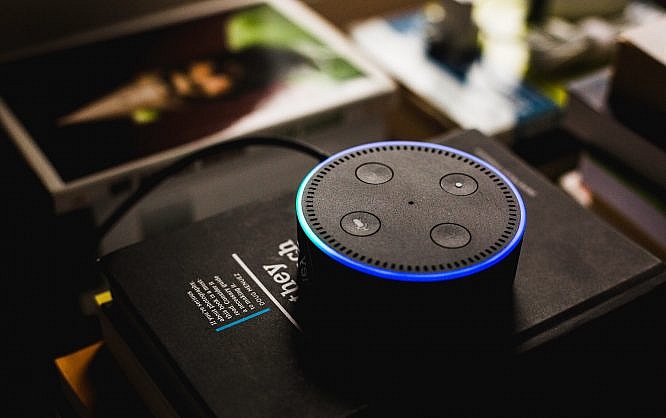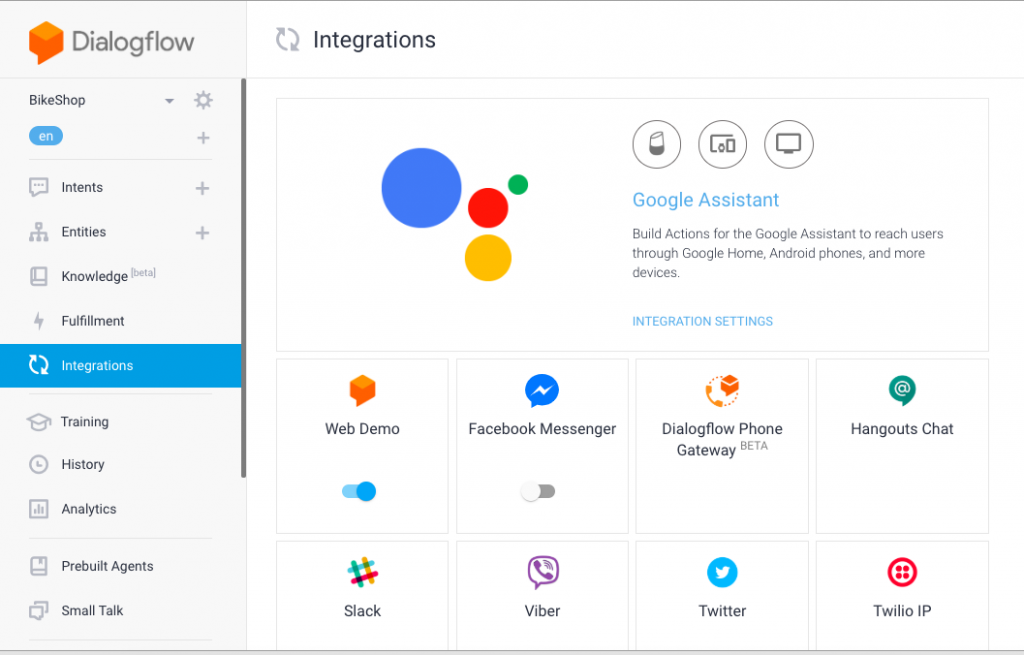The Advantages & Challenges of Conversational User Interfaces

Conversational User Interfaces aren’t a new concept. It has widely gained acceptance over the past few years and more and more websites are willing to have conversational user interfaces on their websites. We're finally at a point where everyone can use it irrespective of their skill level. In this article, we throw light on the advantages and challenges of conversational user interfaces.
For a long time, we've visualized interfaces in the form of buttons, lists, drop-down lists, etc. But now we have entered a future composed of not just visual interfaces but conversational interfaces as well. Microsoft has reported that every week, three thousand bots are created using their bot framework.
A well-known advancement enabling conversational user interfaces is Natural Language Processing, a branch of artificial intelligence that deals with analyzing, understanding and generating the languages that humans use naturally to interface with computers in both written and spoken form using human languages.
Have a look at the below video where Google assistant calls a Salon (in the background) to book an appointment for Lisa.
There’s a business side to design and there’s a psychological one. CUIs incorporate both of these. Some well-known examples of conversational interfaces include chatbots and voice assistants. In order for CUIs to be effective, you must follow best practices and core principles involving creating conversational experiences that feel natural and frictionless.
Let's dive deep into the advantages and challenges of conversational user interfaces.
Advantages of Conversational User Interfaces
Easy To Learn & Use
It is easy for users to learn how to interact with conversational interfaces. The various chat apps and voice assistants have paved the way for the adoption of conversational user interfaces. You can just speak to a device and you will get the information you require.
Non-Procedural Approach Saves Time
The human language is non-procedural. While speaking or chatting, users can provide all the necessary information in one go which is not the case with graphical user interfaces where we have sequential steps. Conversational UI allows users to provide all information in one go thereby saving time. Here’s a sample non-procedural query to a voice assistant - Find flights from San Francisco to Berlin on Tuesday or Thursday next week.
Enable Multitasking
Voice interfaces really excel at hands-free and multitasking situations where the use of our hands is not optimal or simply not possible. With voice user interfaces, one can multitask without significant context switching reducing the risk of accidents. For example, you can be driving and still talking to your voice assistant.
Better Engagement With End-Users
By asking the right questions at appropriate times, we can significantly have better engagement with the users. Live chat applications maximize website conversions. Conversational interfaces are smart, and they help in keeping the customers engaged for prolonged periods. Better engagement results in more leads which eventually leads to higher revenue for the brands. Hence, using conversational interfaces not only increases the revenue of the company but also improves the engagement with its users. Interactive voice systems are a more natural means of interaction than visual interfaces as it removes a visible interface replacing it with voice.
Cross-Platform Integration & Compatibility
Conversational interfaces allow companies to extend their services to platforms where their customers are: on Facebook Messenger, Slack, Telegram, Skype, and WhatsApp. Users can interact with the same service across various devices: TVs, set-top boxes, virtual assistants, phones, tablets, desktop computers, cars, and even watches. Any platform that supports conversational user interfaces can be integrated with the same chatbot - an extremely cost-effective way for businesses to have a multi-channel presence.
You can use Dialogflow’s cross-platform functionality to seamlessly integrate your conversational interface on leading platforms such as Amazon Alexa, Microsoft Azure’s framework for Crotona or Skype, and more.

Tailor-Made Personalized Experiences
Conversational interfaces have the ability to take the customer through the exact journey they are looking for. The progress in natural language processing and machine learning has made it possible to provide tailor-made personalized experiences to users via conversational interfaces in order to establish a deeper personal connection.
Now, we can have targeted questions with clear call-to-action for every interaction making the end-user experience more personalized. We can now deliver the same content or ask the same question to two different users in different ways based on their preferences like gender, tone, accent, and pace. Conversational interfaces can also leverage customer contexts like previous live chat transcripts, purchasing history, and recommended products or services for personalized experiences.
Superior Frictionless User Experience
Everybody knows the importance of user experience these days which largely depends on the interface between the user and the service or product. Traditional user interfaces present many elements like side panels, buttons, and menus - which usually turns the focus away from what they are looking for. Conversational Interfaces make the human-computer interaction more efficient thereby providing users with a superior experience. Having interfaces that don’t require their end-users to spend valuable time learning it creates an effortless and frictionless experience for them.
With voice user interfaces, users don’t need to install multiple apps or create separate accounts for services they use. Why download an app for booking a flight or ordering food when a single chat or voice interface can do it?
Conversational interfaces can be useful for multi-step complex operations. For example: returning a product or claiming a refund. In such cases, the system will collect all required information and create appropriate requests with less friction via a simple conversation.
Challenges Involving Conversational User Interfaces
Conversational UI is fairly new. Here are a few challenges involving conversational user interfaces that prevent it from reaching its full potential
High Expectation from Users
Users expect a lot from chatbots and voice assistants. Users expect conversational interfaces to exactly know what they want, the solutions to their problems, and more. Some even want them to be their companion and sort out their life problems. According to the Uncanny Valley theory, the more the conversation sounds human, the more unrealistic user expectations may become.
We must understand that a conversational interface is still a bot (at the end of the day). The companies must explicitly state that their bot is what it is - and not a human. The companies should also mention that their bot may not have answers to all user queries and if that’s the case - the user must interact with their customer support.
Low Discoverability & Understanding of System Scope
According to Don Norman’s “How to design everyday things”, discoverability and understanding are the two basic characteristics of good design. If a web page has 3 buttons, it probably means that it can do 3 things and you probably know what those are. Chatbots lack both these characteristics. Users are not sure about the capabilities of the chatbot. This leads to the users having unrealistic expectations from the chatbots. Chatbots must try to overcome this challenge by literally telling users what their capabilities are.
Inefficient For Complex Processes
According to research by Nielson Norman Group, chatbots and voice assistants work well only for limited and simple queries having fairly simple and short answers. CUIs only work well when the users know what to ask and how. When the user needs to compare multiple options (consider the case of flight or hotel booking), using CUIs does not really help. Designing complex processes in a conversation format makes them inefficient and frustrating for the users. Buttons, menus, etc now appear in chatbots making them fully-fledged apps.
Sometimes you want to perform a high-priority task that only a human can handle. Conversations require a personal touch in some cases, so you might want a human to step in. In Socialbot, you can also pause a bot and transfer a user to a human agent if it goes beyond the chatbot’s capabilities.
Technology Is Expensive
While natural language processing and machine learning have been around the corner for some time now, the technology is still expensive and is yet to become fully “human-proof”. According to a solutions engineer from Salesforce - one needs to consider 50k$-100k$ to build an NLP-based voice assistant along with training the system for 3-6 months with human agents which incurs additional costs.
Machine Learning Model Training
Machine learning is not required for every conversational interface but if you want to provide personalized experiences, it is essential to set the right patterns. The bot must be trained to recognize the input and deliver relevant output. Moreover, the bot must adapt to a particular user profile to increase the personalization and relevancy of outputs. In order to overcome this challenge, time and effort are required but once you have passed that stage - it’s all good.
Configuring The NLP
In order for the bot to not show “Sorry, I didn’t understand that” response, there should be a coherent system that processes inputs. It includes cleaning up of the input (removal of punctuation and stop words, and word tokenization), word stemming, and a decision-making component that integrates with outside services to commit requested actions.
Non-Implicit Contextual Conversations
Conversational interfaces do not have a mind of their own. CUIs need implicit context in order to process your requests. Users directly need to mention the tasks that need to be done. If you tell your travel agent that your birthday is on the 15th of next month, they will implicitly understand that vacation needs to be booked & they will come up with their research. Even though you didn’t explicitly ask your travel agent to plan and book the vacation, they implicitly understood.
Security & Privacy
Are chatbots and voice assistants really secure? Is your privacy at risk? Do you know that the various chatbot and voice-bot platforms are owned by the leading corporates and all our data and information are their assets? These big corporations “listen to us” outside of the web/app environment. In one particular case, Amazon's Alexa recorded a private conversation and sent it to a random contact. Such cases really hamper the trust between the users and CUIs.
Third-Party Integrations
No doubt that CUIs support cross-platform integration and are compatible with multiple devices, the challenge is to integrate with third-party services like the ones used for integrating with the companies’ customer data.
Conclusion
We briefly touched upon conversational user interfaces, their advantages, and the challenges involving them. CUIs are easy to learn and use, enable multitasking, follow a non-procedural approach to save time, facilitate better engagement with end-users, provide tailor-made personalized frictionless experiences.
On the other hand, CUIs have low discoverability and understanding of system scope, the technology is expensive and inefficient for complex processes, users expect a lot from chatbots and voice assistants, requires a lot of time and effort for creating personalized experiences, need implicit context to process your request, difficult to integrate with third-party services, and there are concerns over security and user privacy.
Featured Image by Andres Urena on Unsplash
